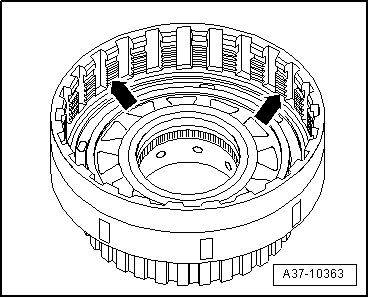A4 Cabriolet Mk2
| Clutch “A” |
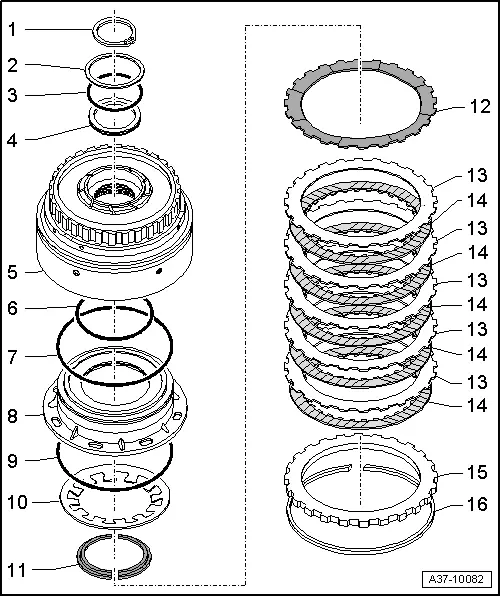
| 5 - | Cylinder “A” |
| q | Check inner surfaces for traces of scoring by friction plates → Fig. |
| q | Check outer surfaces for traces of scoring by friction plates → Fig. |
| q | Checking running surface for rectangular section seal in cylinder “A” for wear → Fig. |
| q | Check splines |
| 10 - | Dished spring |
| q | Renew if there are traces of scoring or if ends of dished spring are bent. |
| 11 - | Split retaining ring |
| q | Renew if distorted |
| 12 - | Outer plate |
| q | Checking for wear → Fig. |
| 13 - | Friction plate |
| q | Checking for wear → Fig. |
|
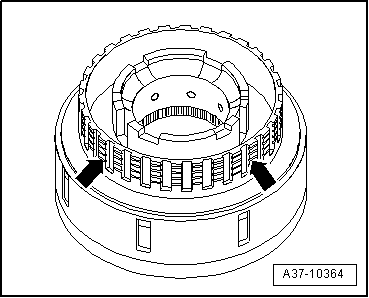
|
|
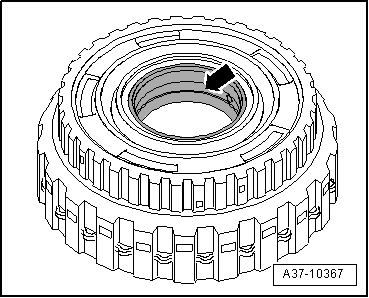
|
|
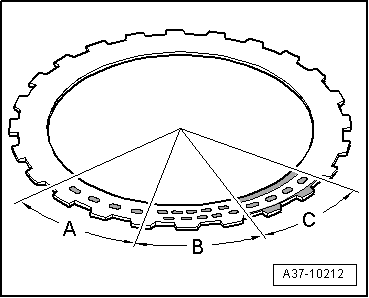
|

